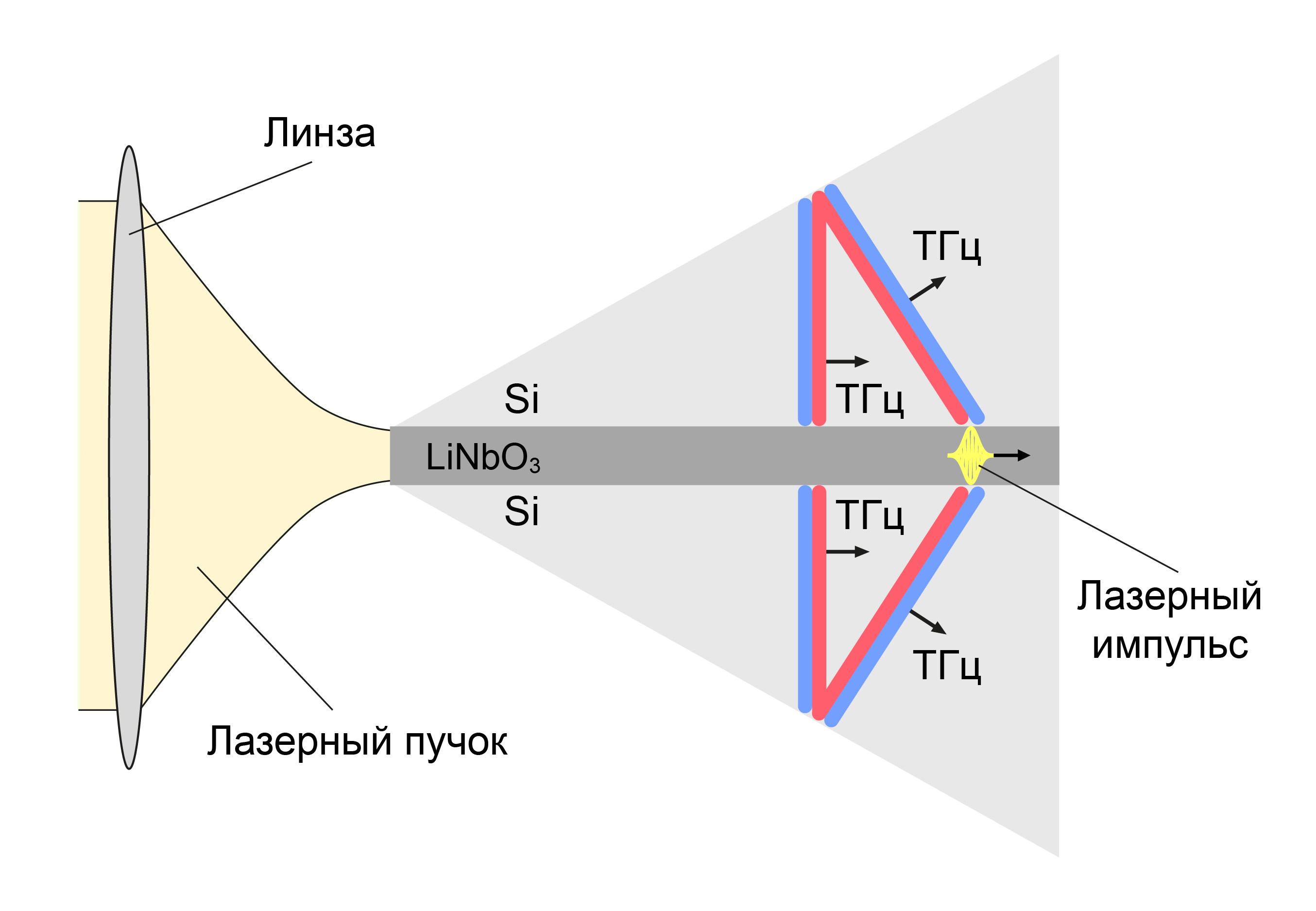UNN receives a patent for an original optical-to-terahertz converter

Terahertz radiation, which occupies a large portion of the electromagnetic spectrum between infrared light and microwaves, has a number of unusual properties. It can penetrate opaque materials and selectively interact with substances, thus allowing their identification, and it can even accelerate elementary particles. The prospects for scientific and practical applications of terahertz radiation are quite tempting, and scientists around the world work hard to create effective sources of this type of radiation. The problem is that terahertz radiation cannot be generated either as light, by using laser methods, or as microwaves, by applying electronic methods. Therefore, special methods have to be invented specifically for this type of radiation. One of such methods is optical rectification of ultra-short (femtosecond) laser pulses in a lithium niobate crystal. Due to its specific properties, the crystal extracts from the laser pulse its envelope, as if clearing it of optical field oscillations. The resulting envelope is the source of terahertz radiation.
The optical-to-terahertz transducer developed at Lobachevsky University comprises a sandwich structure in the form of a thin (30-50 microns thick) layer of lithium niobate placed between two silicon prisms. The laser pulse propagates in the crystal as in a waveguide and generates terahertz radiation, which is emitted from it in both directions. Upon total internal reflection in the prisms, radiation emerges into free space as two adjacent beams forming in fact one wide beam. The authors of the invention are Professor Mikhail Bakunov, Head of the General Physics Department at the UNN Faculty of Radiophysics, and Sergei Sychugin, Junior Researcher of the same department. "Using the original solution with symmetrical output of radiation from the crystal in opposite directions and the subsequent formation of a single terahertz beam due to the effect of total reflection in prisms, we have been able to overcome spectrum notching in the radiation generated, which was a fundamental disadvantage of previous converters of this type. Our experiments have also shown high efficiency of this converter and good quality of the terahertz beam", Mikhail Bakunov comments. During the experiments with the new sandwich structure, the radiation of a titanium sapphire laser with pulse energy of 10 µJ was converted to terahertz radiation with a spectral width of more than 3 THz and an efficiency of 0.35%. The results of the study were published in the journal Optics Letters.



